Combining Artificial Intelligence with Physics-Based Methods for Probabilistic Renewable Energy Forecasting
Abstract
:1. Introduction
2. General Approach to System Forecasting
2.1. System Overview
2.2. DICast
2.2.1. DICast Methodology
2.2.2. DICast Results
3. Short-Range Forecasting for Wind and Solar
3.1. StatCast-Wind
3.1.1. StatCast-Wind Methodology
3.1.2. StatCast-Wind Results
3.2. StatCast-Solar
3.2.1. StatCast-Solar Methodology
- Cubist—Cubist models using only current observations of T, Kt, U, V, RH, and the previous 90-minute averages of Kt observations at 15-minute intervals plus valid DICast forecast variables of Kt, percent cloud cover, dew point, T, P.
- Kt Persistence—Clearness index remains constant between generation time and forecast time, also referred to as “smart” persistence because it allows the solar angle to change. This serves as a baseline.
- DICast—DICast forecast of Kt.
3.2.2. StatCast-Solar Results
4. Completing the Forecast
4.1. Analog Ensemble
4.1.1. AnEn Methodology
4.1.2. AnEn Results
4.2. Viewing the Results
5. Conclusions
Author Contributions
Funding
Acknowledgments
Conflicts of Interest
References
- IEA. Renewables 2018: Market Analysis and Forecast from 2018 to 2023; International Energy Agency: Paris, France, 2018; Available online: https://www.iea.org/renewables2018 (accessed on 8 October 2019).
- Xcel Energy. A Carbon-Free Future. Xcel Energy Corporate Responsibility Report. 2019. Available online: https://www.xcelenergy.com/company/corporate_responsibility_report/library_of_report_briefs/a_carbon_free_future (accessed on 8 October 2019).
- Inman, R.H.; Pedro, H.T.C.; Coimbra, C.F.M. Solar forecasting methods for renewable energy integration. Prog. Energy Combust. Sci. 2013, 39, 535–576. [Google Scholar] [CrossRef]
- Tuohy, A.; Zack, J.; Haupt, S.E.; Sharp, J.; Ahlstrom, M.; Dise, S.; Grimit, E.; Möhrlen, C.; Lange, M.; Garcia Casado, M.; et al. Solar forecasting: Methods, challenges, and performance. IEEE Power Energy Mag. 2015, 13, 50–59. [Google Scholar] [CrossRef]
- Giebel, G.; Kariniotakis, G. Wind power forecasting—A review of the state of the art. In Renewable Energy Forecasting: From Models to Applications; Kariniotakis, G., Ed.; Woodhead Publishing: Cambridge, MA, USA, 2017; 373p. [Google Scholar] [CrossRef]
- Orwig, K.D.; Ahlstrom, M.; Banunarayanan, V.; Sharp, J.; Wilczak, J.M.; Freedman, J.; Haupt, S.E.; Cline, J.; Bartholomie, O.; Hamman, H.; et al. Recent trends in variable generation forecasting and its value to the power system. IEEE Trans. Renew. Energy 2014, 6, 924–933. [Google Scholar] [CrossRef]
- Haupt, S.E. Short-range forecasting for energy. In Weather & Climate Services for the Energy Industry; Troccoli, A., Ed.; Palgrave Macmillan: Cham, Switzerland, 2018; 197p. [Google Scholar] [CrossRef] [Green Version]
- Mahoney, W.P.; Parks, K.; Wiener, G.; Liu, Y.; Myers, W.L.; Sun, J.; Delle Monache, L.; Hopson, T.; Johnson, D.; Haupt, S.E. A wind power forecasting system to optimize grid integration. IEEE Trans. Sustain. Energy 2012, 3, 670–682. [Google Scholar] [CrossRef]
- Haupt, S.E.; Kosović, B.; Jensen, T.; Lazo, J.K.; Lee, J.A.; Jiménez, P.A.; Cowie, J.; Wiener, G.; McCandless, T.C.; Rogers, M.; et al. Building the Sun4Cast system: Improvements in solar power forecasting. Bull. Am. Meteor. Soc. 2018, 99, 121–136. [Google Scholar] [CrossRef]
- KISR. 2019 Kuwait Energy Outlook: Sustaining Prosperity through Strategic Energy Management; Kuwait Institute for Scientific Research: Shuwaikh, Kuwait, 2019; 84p, Available online: https://www.arabstates.undp.org/content/dam/rbas/doc/Energy%20and%20Environment/KEO_report_English.pdf (accessed on 8 October 2019).
- Al-Rasheedi, M.; Gueymard, C.A.; Al-Khayat, M.; Ismail, A.; Lee, J.A.; Al-Duaj, H. Performance evaluation of a utility-scale dual-technology photovoltaic power plant at the Shagaya Renewable Energy Park in Kuwait. Renew. Sustain. Energy Rev. 2020. submitted. [Google Scholar]
- Warner, T.T. Numerical Weather and Climate Prediction; Cambridge University Press: New York, NY, USA, 2011; 526p, ISBN 978-0-521-51389-0. [Google Scholar]
- Jiménez, P.A.; Lee, J.A.; Kosović, B.; Haupt, S.E. Solar resource evaluation with numerical weather prediction models. In Solar Resources Mapping: Fundamentals and Applications; Polo, J., Sanfilippo, A., Pomares, L., Eds.; Green Energy and Technology; Springer Nature: Cham, Switzerland, 2019; 367p. [Google Scholar] [CrossRef]
- Alessandrini, S.; McCandless, T.C. The Schaake shuffle technique to combine solar and wind power probabilistic forecasting. Energies 2020. submitted for publication. [Google Scholar]
- Wiener, G.; Brummet, T.; Linden, S.; Pearson, J.; Srivastava, I.; Alessandrini, S.; Al-Rasheedi, M. An evaluation of wind and solar power conversion methods. Energies 2020. submitted for publication. [Google Scholar]
- Myers, W.; Wiener, G.; Linden, S.; Haupt, S.E. A consensus forecasting approach for improved turbine hub height wind speed predictions. In Proceedings of the AWEA Windpower Conference & Exhibition, Anaheim, CA, USA, 24 May 2011. [Google Scholar]
- Powers, J.G.; Klemp, J.B.; Skamarock, W.C.; Davis, C.A.; Dudhia, J.; Gill, D.O.; Coen, J.L.; Gochis, D.J.; Ahmadov, R.; Peckham, S.E.; et al. The Weather Research and Forecasting model: Overview, system efforts, and future directions. Bull. Am. Meteor. Soc. 2017, 98, 1717–1737. [Google Scholar] [CrossRef]
- Jiménez, P.A.; Hacker, J.P.; Dudhia, J.; Haupt, S.E.; Ruiz-Arias, J.A.; Gueymard, C.A.; Thompson, G.; Eidhammer, T.; Deng, A. WRF-Solar: An augmented NWP model for solar power prediction. Bull. Am. Meteor. Soc. 2016, 97, 1249–1264. [Google Scholar] [CrossRef]
- Jiménez, P.A.; Alessandrini, S.; Haupt, S.E.; Deng, A.; Kosović, B.; Lee, J.A.; Delle Monache, L. The role of unresolved clouds on short-range global horizontal irradiance predictability. Mon. Weather Rev. 2016, 144, 3099–3107. [Google Scholar] [CrossRef]
- Tallapragada, V.; Manikin, G. Implementation of NGGPS/FV3GFS V1.0: GDAS/GFS V15.0.0 for Q2FY2019. NCEP OD Science and Decisional Brief; 1 October 2018. Available online: http://www.emc.ncep.noaa.gov/users/Alicia.Bentley/fv3gfs/updates/OD_Brief_10-01-18_FV3GFS.pptx (accessed on 29 January 2020).
- Manikin, G.; Bentley, A.; Dawson, L.; Dorian, T. The Implementation of GFSv15. NCEP/EMC Model Evaluation Group; 13 June 2019. Available online: http://www.emc.ncep.noaa.gov/users/Alicia.Bentley/fv3gfs/updates/MEG_6-13-19_GFSv15.pptx (accessed on 29 January 2020).
- Husain, S.Z.; Girard, C.; Qaddouri, A.; Plante, A. A new dynamical core of the Global Environmental Multiscale (GEM) model with a height-based terrain-following vertical coordinate. Mon. Weather Rev. 2019, 147, 2555–2578. [Google Scholar] [CrossRef] [Green Version]
- McTaggart-Cowan, R.; Vaillancourt, P.A.; Zadra, A.; Chamberland, S.; Charron, M.; Corvec, S.; Milbrandt, J.A.; Paquin-Ricard, D.; Patoine, A.; Roch, M.; et al. Modernization of atmospheric physics parameterization in Canadian NWP. J. Adv. Model. Earth Syst. 2019, 11, 3593–3635. [Google Scholar] [CrossRef] [Green Version]
- Glahn, H.R.; Lowry, D.A. The use of Model Output Statistics (MOS) in objective weather forecasting. J. Appl. Meteorol. 1972, 11, 1203–1211. [Google Scholar] [CrossRef] [Green Version]
- Haupt, S.E.; Kosović, B. Variable generation power forecasting as a big data problem. IEEE Trans. Sustain. Energy 2017, 8, 725–732. [Google Scholar] [CrossRef]
- Myers, W.; Chen, F.; Block, J.; Burnsville, M.N. Application of atmospheric and land data assimilation systems to an agricultural decision support system. In Proceedings of the 28th Conference on Agricultural and Forest Meteorology, American Meteorological Society, Orlando, FL, USA, 27 April–2 May 2008; Available online: http://ams.confex.com/ams/28Hurricanes/techprogram/paper_138947.htm (accessed on 10 February 2020).
- Naegele, S.M.; McCandless, T.C.; Greybush, S.J.; Young, G.S.; Haupt, S.E.; Al-Rasheedi, M. Climatology of wind variability for the Kuwait region. Renew. Sustain. Energy Rev. 2020. conditionally accepted and in revision. [Google Scholar]
- Stull, R.B. An Introduction to Boundary Layer Meteorology; Kluwer Academic Publishers: Boston, MA, USA, 1988; 666p. [Google Scholar] [CrossRef]
- Quinlan, J.R. Learning with continuous classes. In Proceedings of the Australian Joint Conference on AI, Hobart, Australia, 16–18 May 1992; pp. 343–348. [Google Scholar]
- McCandless, T.C.; Young, G.S.; Haupt, S.E.; Hinkelman, L.M. Regime-dependent short-range solar irradiance forecasting. J. Appl. Meteorol. Climatol. 2016, 55, 1599–1613. [Google Scholar] [CrossRef]
- McCandless, T.C.; Haupt, S.E.; Young, G.S. A regime-dependent artificial neural network technique for short-range solar irradiance forecasting. Renew. Energy 2016, 89, 351–359. [Google Scholar] [CrossRef] [Green Version]
- McCandless, T.C.; Dettling, S.; Haupt, S.E. Comparison of implicit vs. explicit regime identification in machine learning methods for solar irradiance prediction. Energies 2020, 13, 689. [Google Scholar] [CrossRef] [Green Version]
- Dobschinski, J.; Bessa, R.; Du, P.; Geisler, K.; Haupt, S.E.; Lange, M.; Möhrlen, C.; Nakafuji, D.; de la Torre Rodriguez, M. Uncertainty forecasting in a nutshell. IEEE Power Eng. Syst. 2017, 15, 40–49. [Google Scholar] [CrossRef] [Green Version]
- Bessa, R.J.; Möhrlen, C.; Fundel, V.; Siefert, M.; Browell, J.; Haglund El Gaidi, S.; Hodge, B.-M.; Cali, U.; Kariniotakis, G. Towards improved understanding of the applicability of uncertainty forecasts in the electric power industry. Energies 2017, 10, 1402. [Google Scholar] [CrossRef]
- Haupt, S.E.; Garcia Casado, M.; Davidson, M.; Dobschinski, J.; Du, P.; Lange, M.; Miller, T.; Möhrlen, C.; Motley, A.; Pestana, R.; et al. The use of probabilistic forecasts: Applying them in theory and practice. IEEE Power Energy Mag. 2019, 17, 46–57. [Google Scholar] [CrossRef]
- Alessandrini, S.; Delle Monache, L.; Sperati, S.; Nissen, J. A novel application of an analog ensemble for short-term wind power forecasting. Renew. Energy 2015, 76, 768–781. [Google Scholar] [CrossRef]
- Alessandrini, S.; Delle Monache, L.; Sperati, S.; Cervone, G. An analog ensemble for short-term probabilistic solar power forecast. Appl. Energy 2015, 157, 95–110. [Google Scholar] [CrossRef] [Green Version]
- Delle Monache, L.; Eckel, F.A.; Rife, D.L.; Nagarajan, B.; Searight, K. Probabilistic weather prediction with an analog ensemble. Mon. Weather Rev. 2013, 141, 3498–3516. [Google Scholar] [CrossRef] [Green Version]
- Cervone, G.; Clemente-Harding, L.; Alessandrini, S.; Delle Monache, L. Short-term photovoltaic power forecasting using Artificial Neural Networks and an Analog Ensemble. Renew. Energy 2017, 108, 274–286. [Google Scholar] [CrossRef] [Green Version]
- Clark, M.; Gangopadhyay, S.; Hay, L.; Rajagopalan, B.; Wilby, R. The Schaake shuffle: A method for reconstructing space–time variability in forecasted precipitation and temperature fields. J. Hydrometeorol. 2004, 5, 243–262. [Google Scholar] [CrossRef] [Green Version]
- Sperati, S.; Alessandrini, S.; Delle Monache, L. Gridded probabilistic weather forecasts with an analog ensemble. Q. J. R. Meteor. Soc. 2017, 143, 2874–2885. [Google Scholar] [CrossRef]
- Hopson, T.M. Assessing the ensemble spread-error relationship. Mon. Weather Rev. 2014, 142, 1125–1142. [Google Scholar] [CrossRef]
- Tye, M.R.; Haupt, S.E.; Gilleland, E.; Kalb, C.; Jensen, T. Assessing evidence for weather regimes governing solar power generation in Kuwait. Energies 2019, 12, 4409. [Google Scholar] [CrossRef] [Green Version]
- Kosović, B.; Haupt, S.E.; Adriaansen, D.; Alessandrini, S.; Wiener, G.; Delle Monache, L.; Liu, Y.; Linden, S.; Jensen, T.; Cheng, W.; et al. A comprehensive wind power forecasting system integrating artificial intelligence and numerical weather prediction. Energies 2020, 13, 1372. [Google Scholar] [CrossRef] [Green Version]
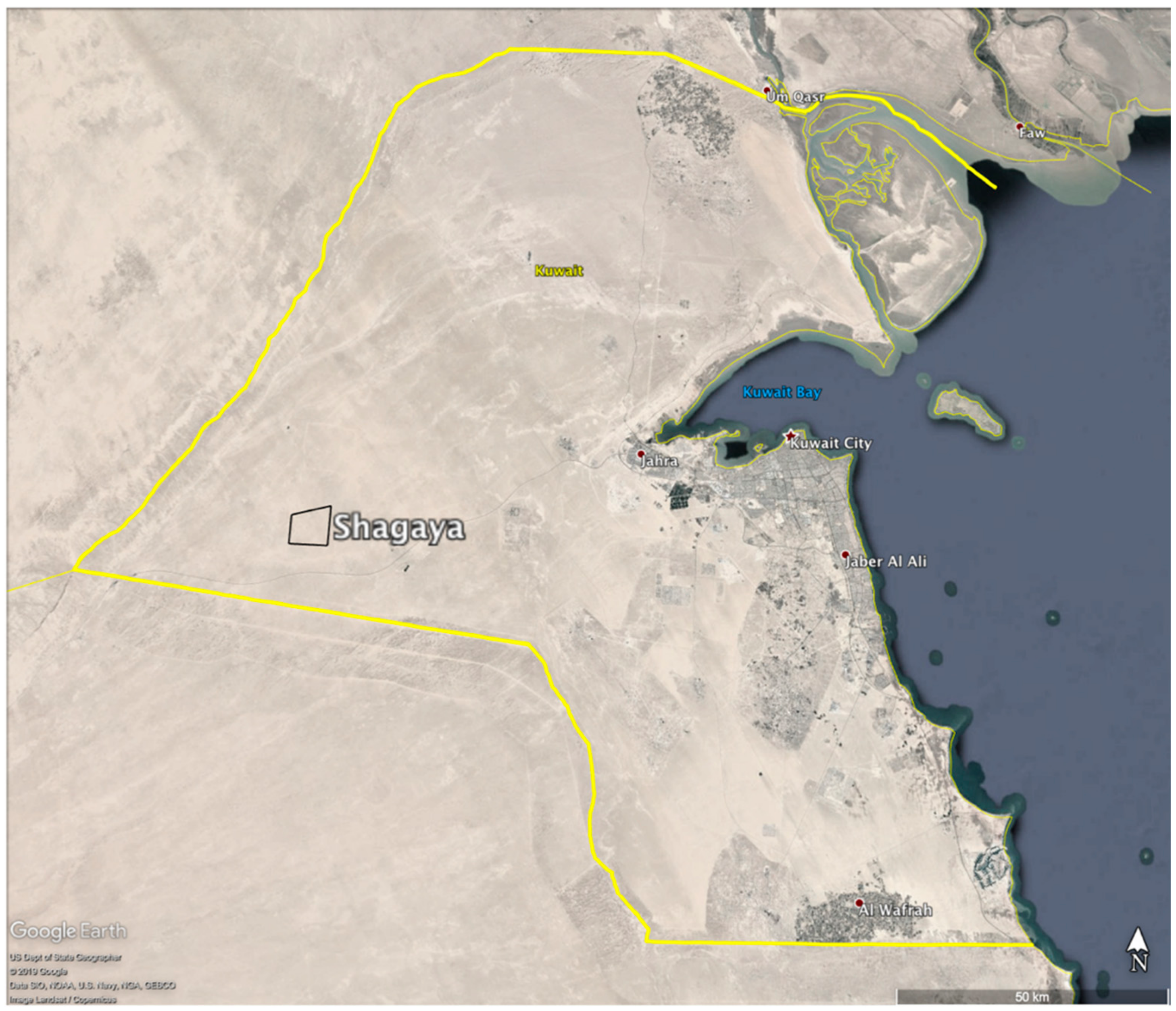
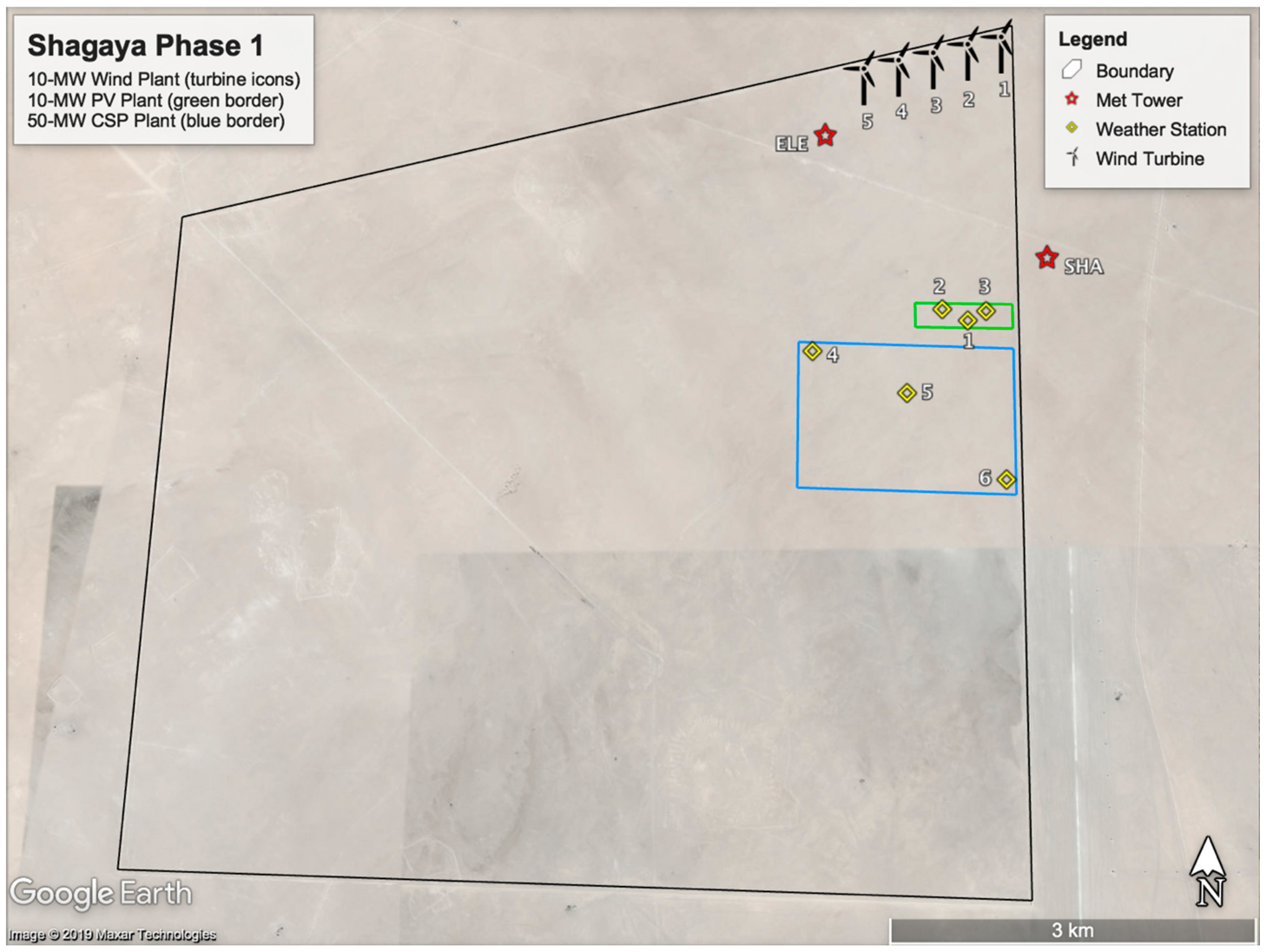

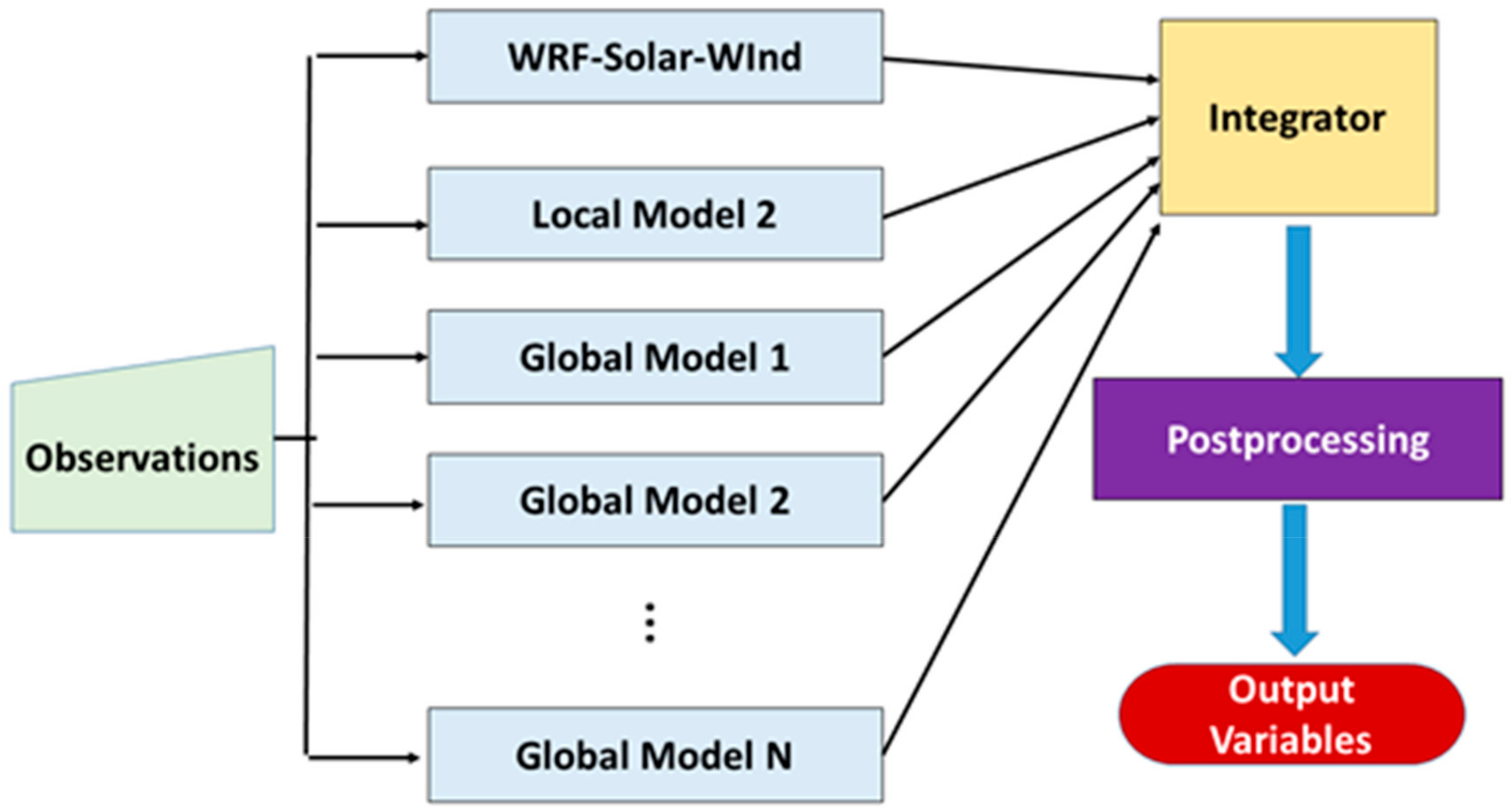
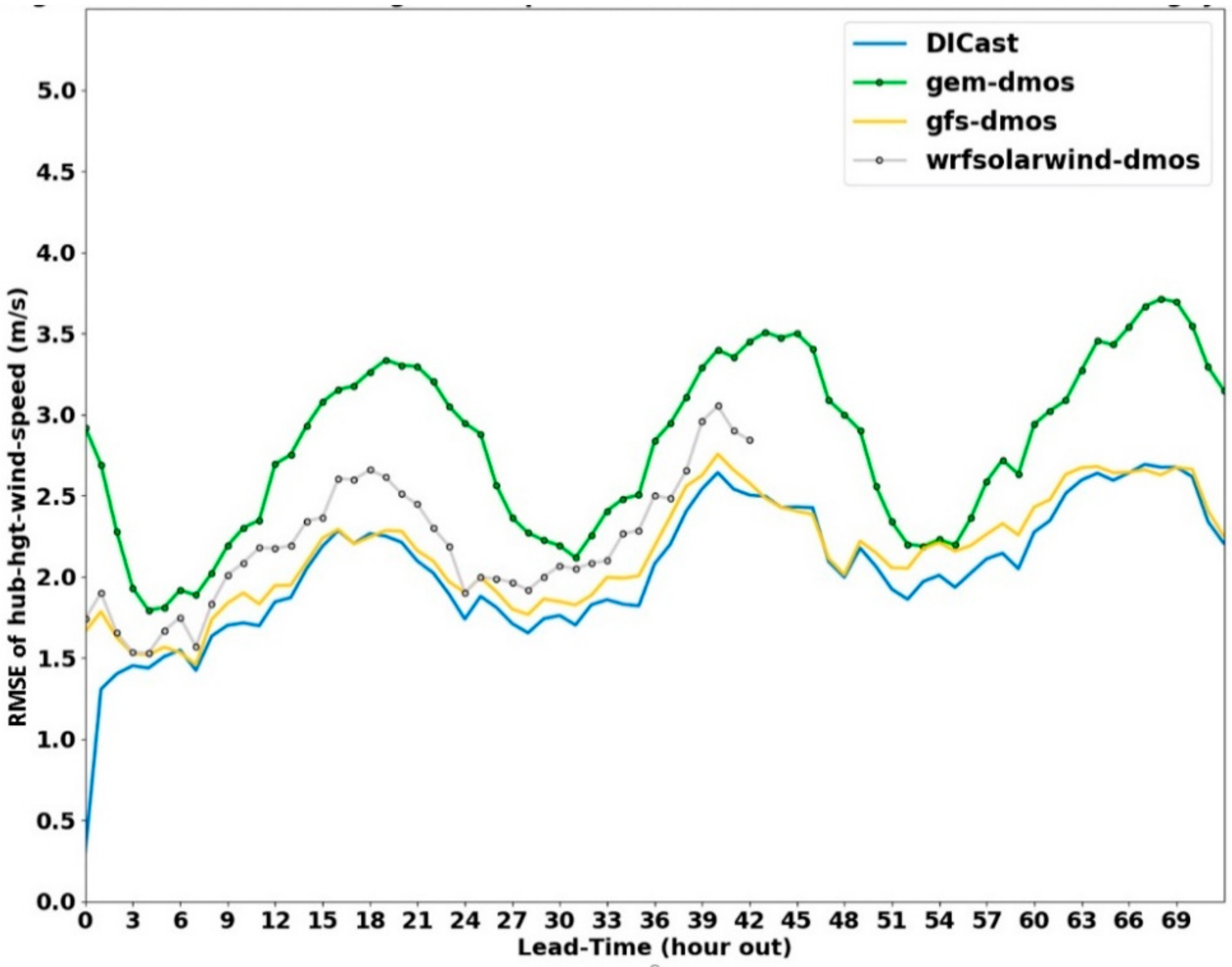

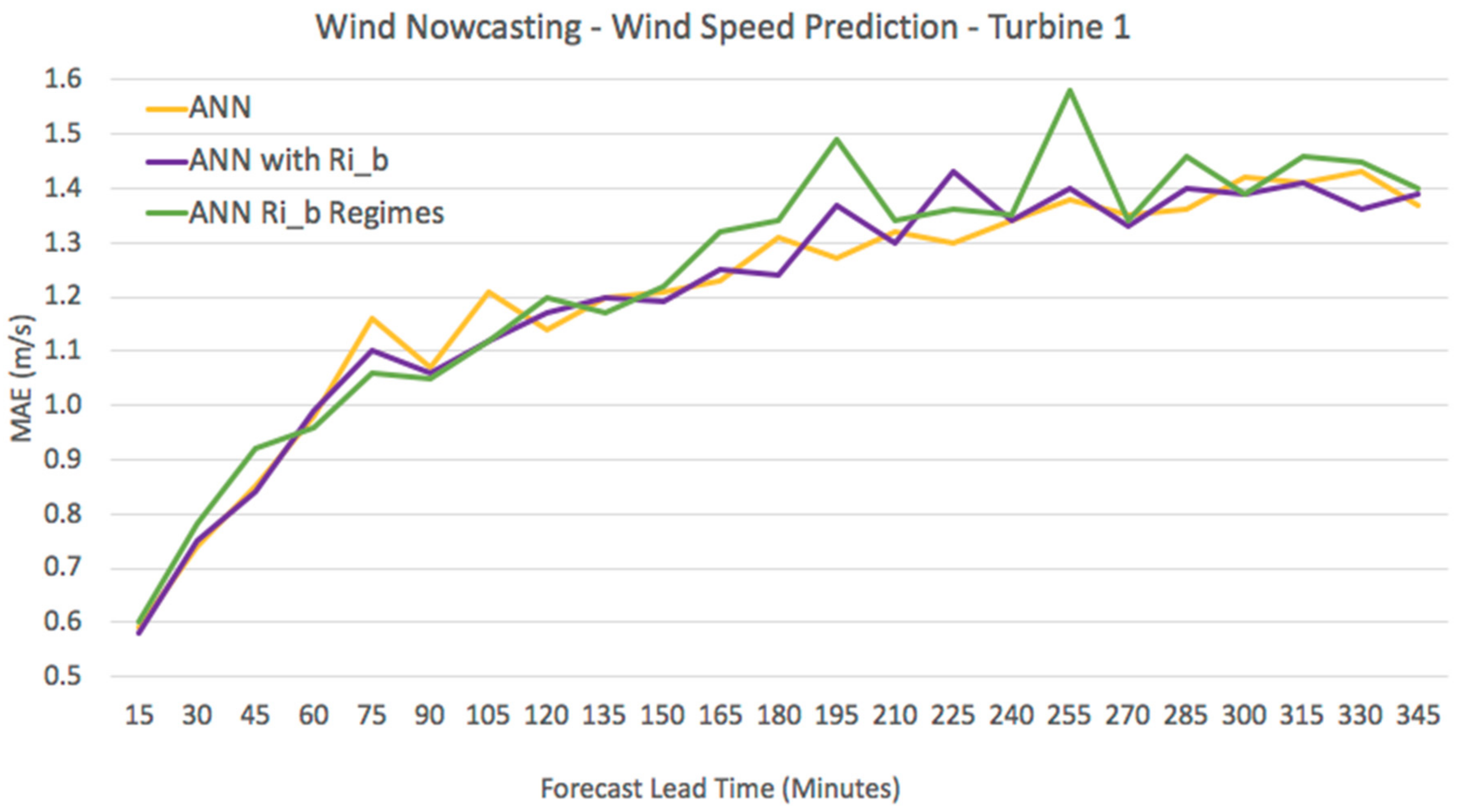
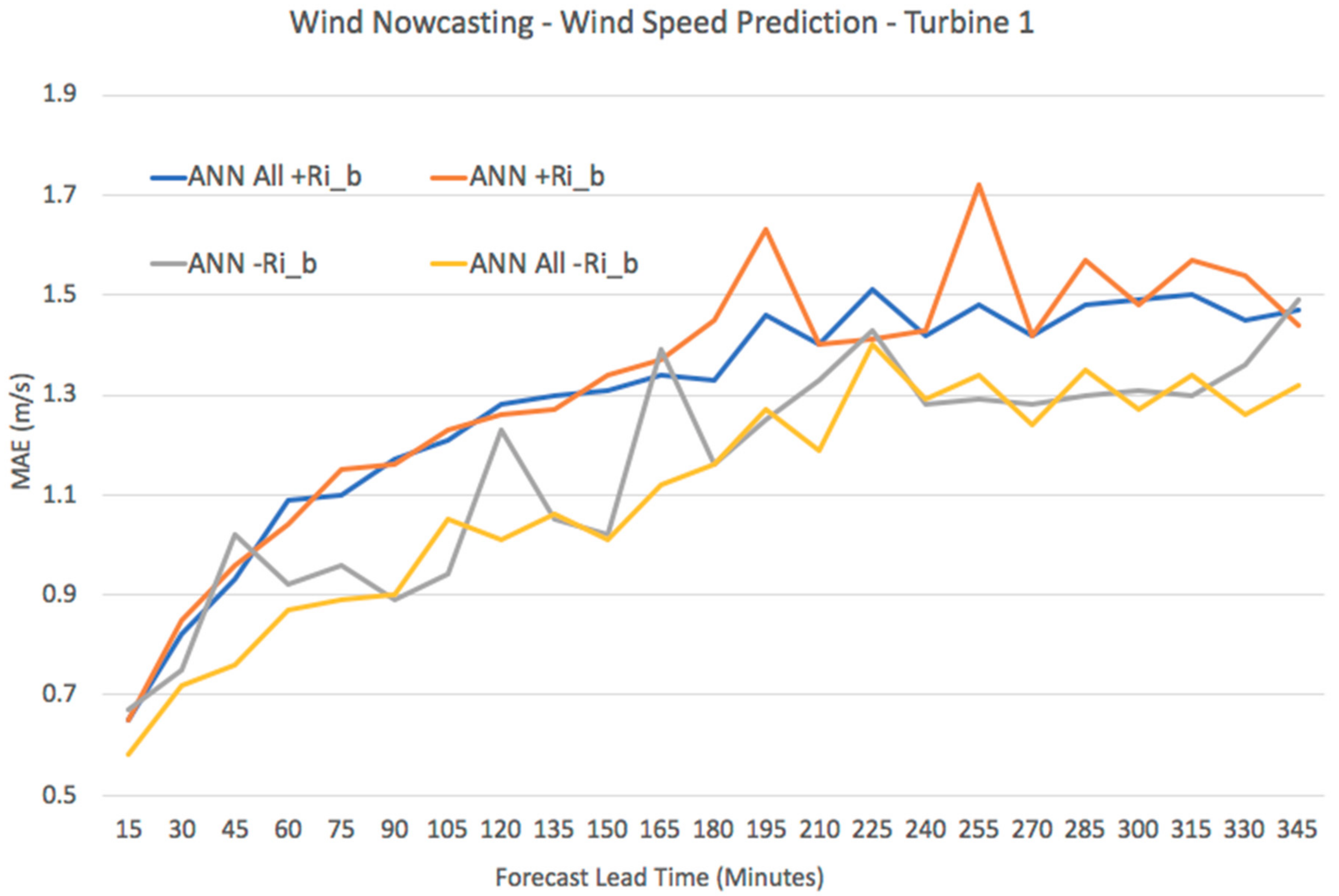


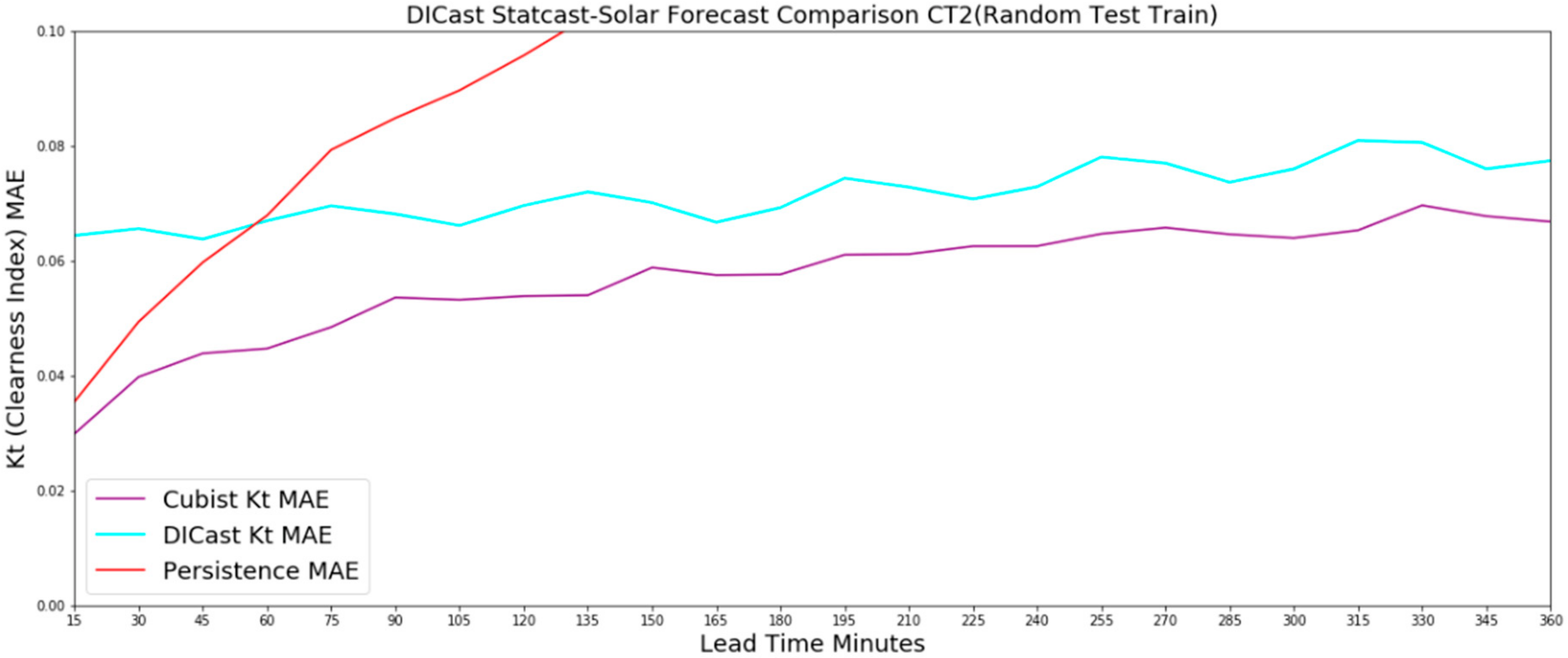
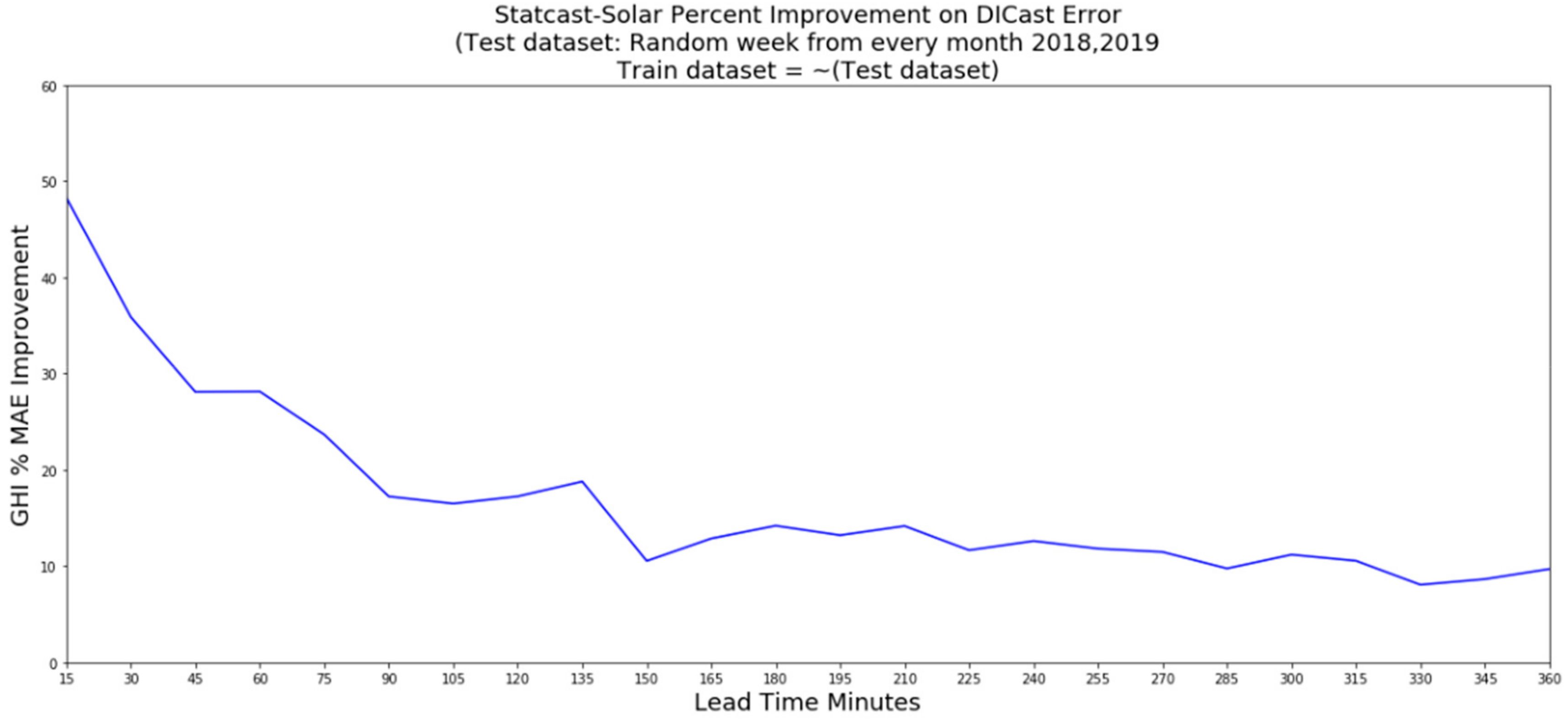
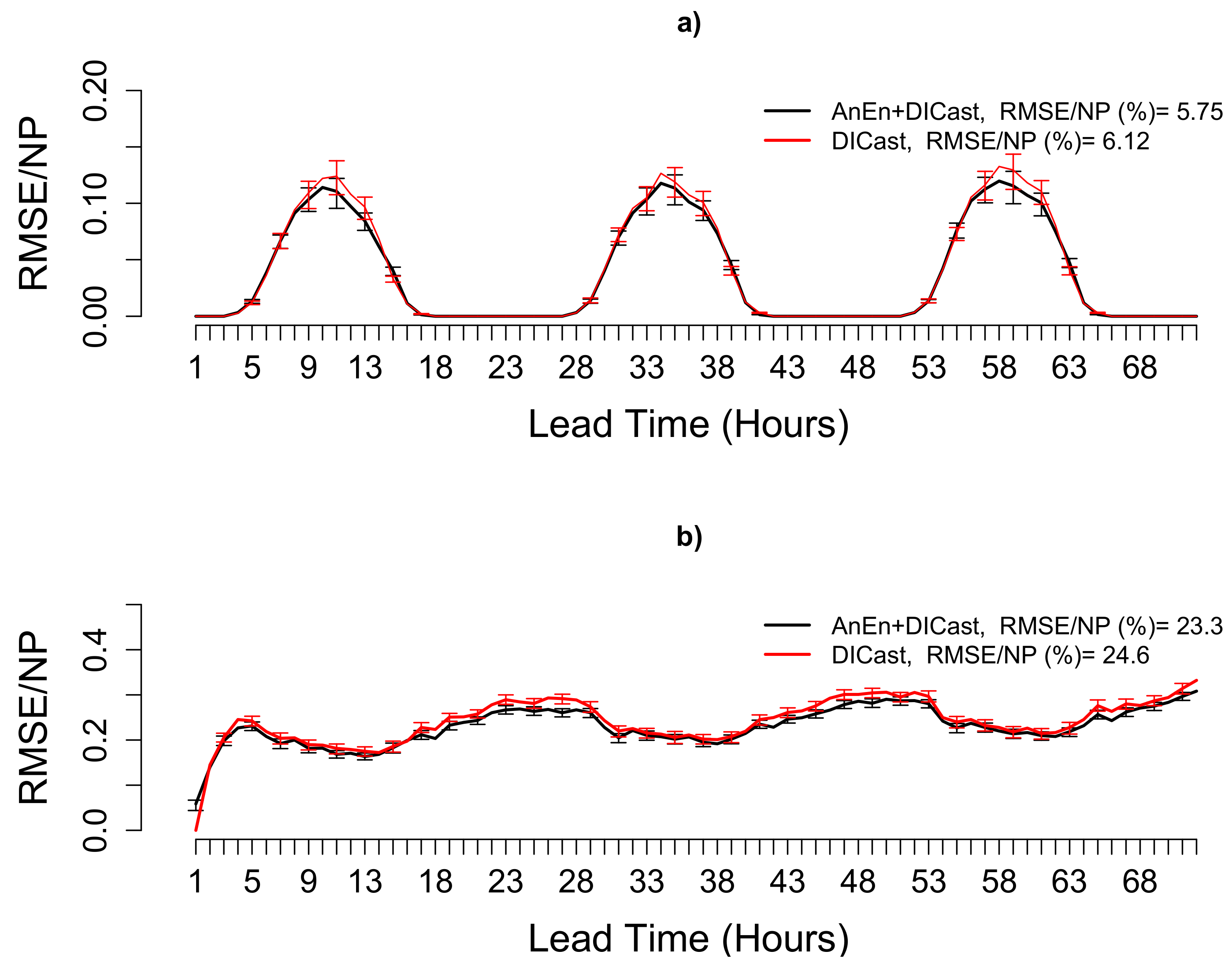
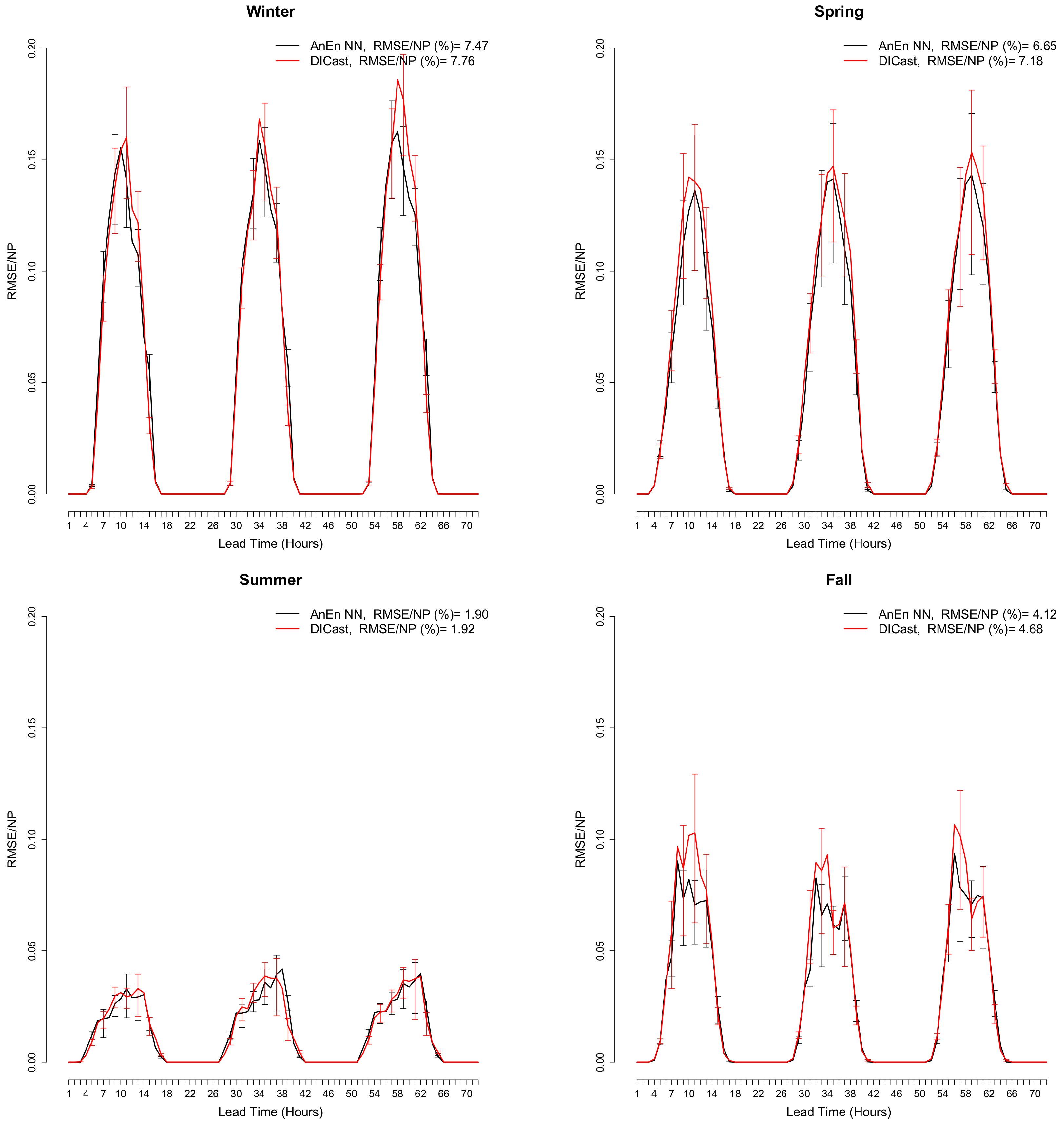



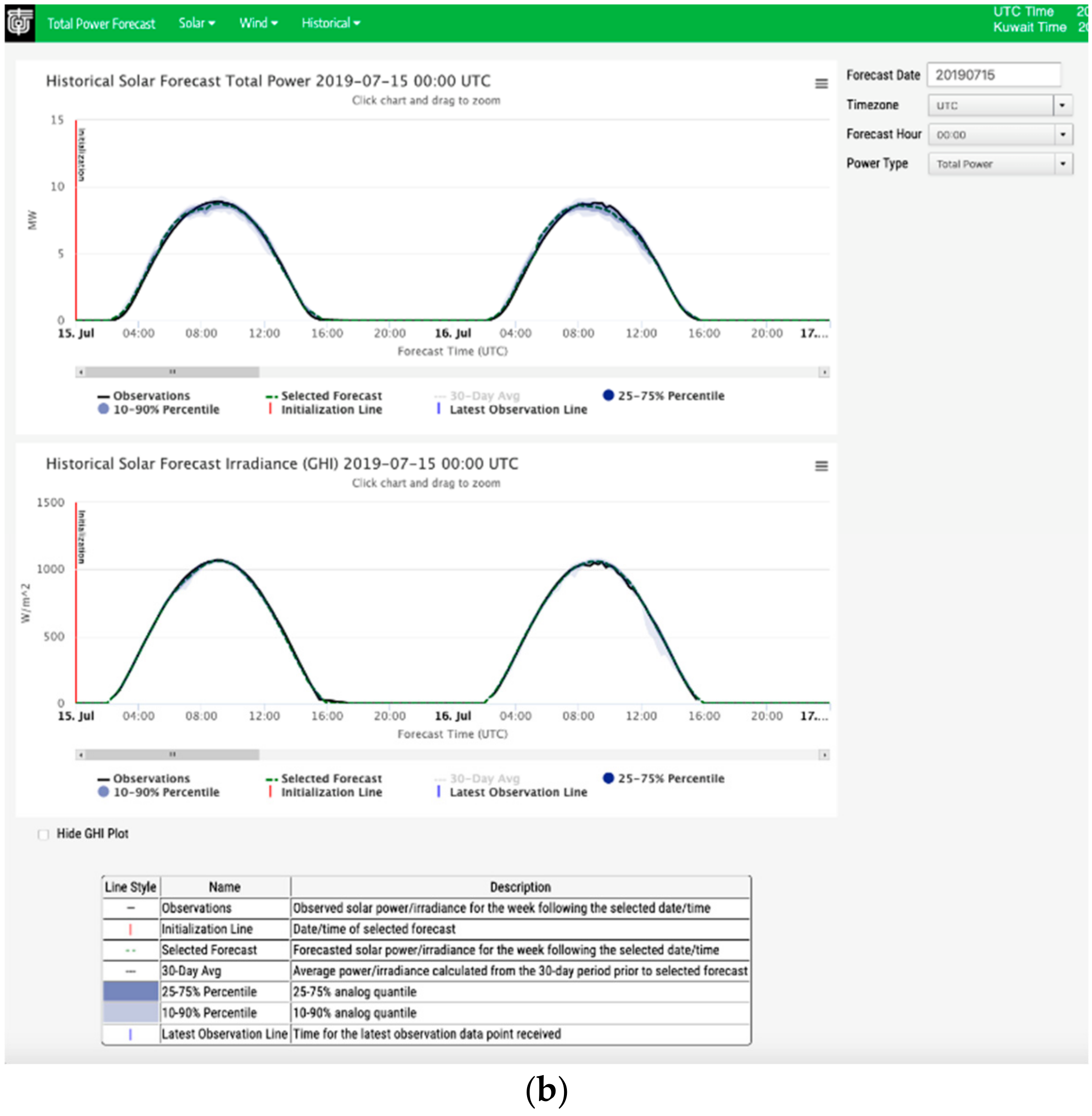
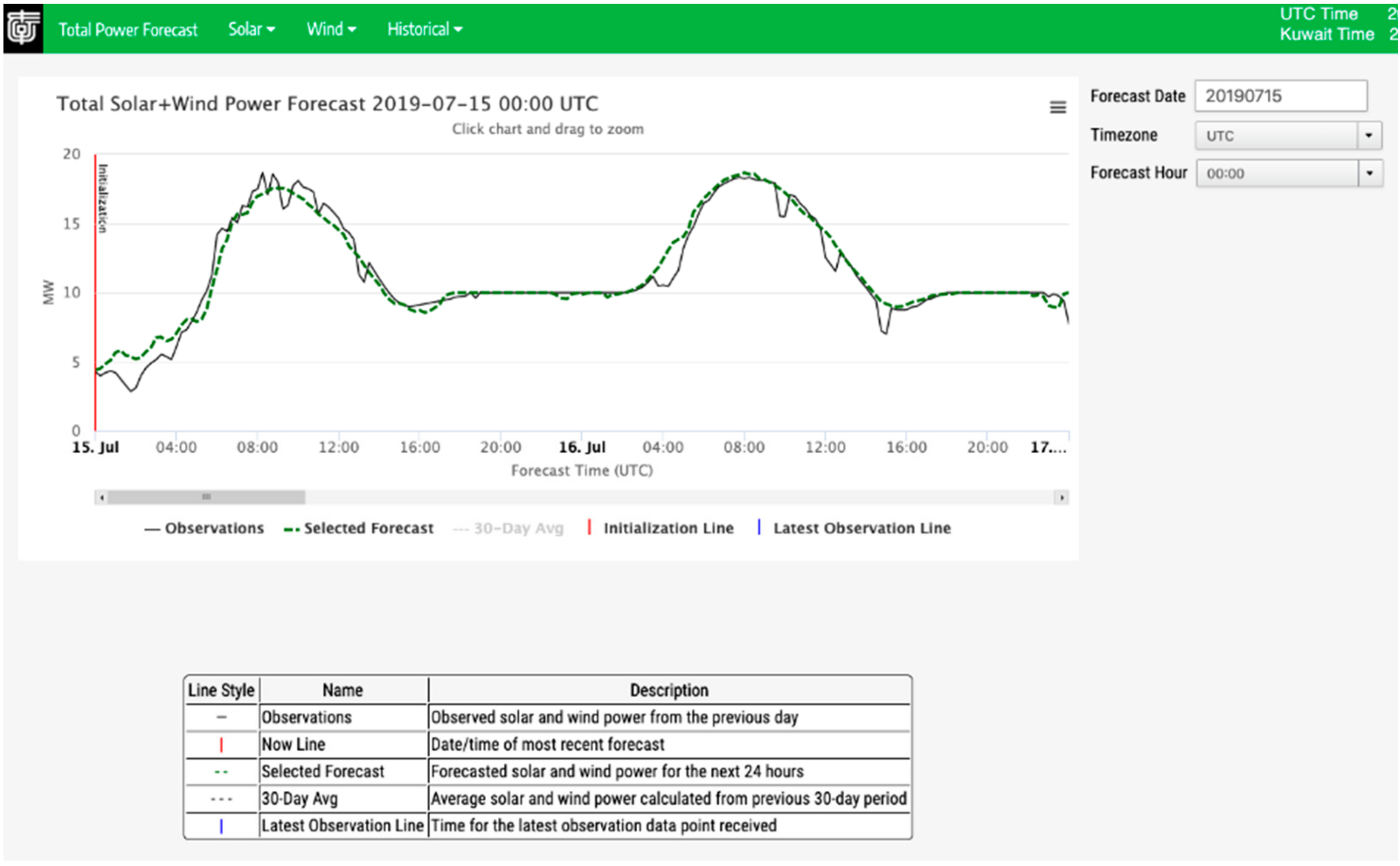
© 2020 by the authors. Licensee MDPI, Basel, Switzerland. This article is an open access article distributed under the terms and conditions of the Creative Commons Attribution (CC BY) license (http://creativecommons.org/licenses/by/4.0/).
Share and Cite
Haupt, S.E.; McCandless, T.C.; Dettling, S.; Alessandrini, S.; Lee, J.A.; Linden, S.; Petzke, W.; Brummet, T.; Nguyen, N.; Kosović, B.; et al. Combining Artificial Intelligence with Physics-Based Methods for Probabilistic Renewable Energy Forecasting. Energies 2020, 13, 1979. https://doi.org/10.3390/en13081979
Haupt SE, McCandless TC, Dettling S, Alessandrini S, Lee JA, Linden S, Petzke W, Brummet T, Nguyen N, Kosović B, et al. Combining Artificial Intelligence with Physics-Based Methods for Probabilistic Renewable Energy Forecasting. Energies. 2020; 13(8):1979. https://doi.org/10.3390/en13081979
Chicago/Turabian StyleHaupt, Sue Ellen, Tyler C. McCandless, Susan Dettling, Stefano Alessandrini, Jared A. Lee, Seth Linden, William Petzke, Thomas Brummet, Nhi Nguyen, Branko Kosović, and et al. 2020. "Combining Artificial Intelligence with Physics-Based Methods for Probabilistic Renewable Energy Forecasting" Energies 13, no. 8: 1979. https://doi.org/10.3390/en13081979
APA StyleHaupt, S. E., McCandless, T. C., Dettling, S., Alessandrini, S., Lee, J. A., Linden, S., Petzke, W., Brummet, T., Nguyen, N., Kosović, B., Wiener, G., Hussain, T., & Al-Rasheedi, M. (2020). Combining Artificial Intelligence with Physics-Based Methods for Probabilistic Renewable Energy Forecasting. Energies, 13(8), 1979. https://doi.org/10.3390/en13081979






